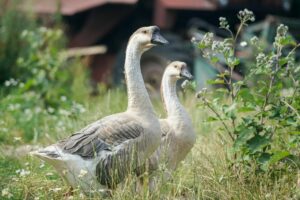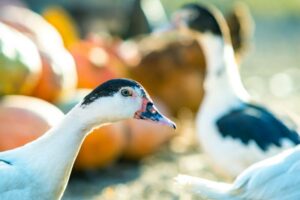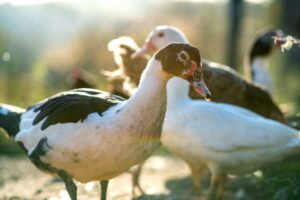The Specklebelly Goose, a highly treasured culinary delight due to its tenderness and flavor, is deemed as a trophy by hunting aficionados owing to its elusive nature. It is widely known as the Greater White-Fronted Goose, Anser albifrons, and is part of a family of related species, which includes the Greenland White-Fronted Goose, Gambel’s White-Fronted Goose, and the European White-Fronted Goose.
A Specklebelly Goose’s Migratory Mannerisms
During the warm summer months, these creatures inhabit the arctic terrains of Canada and Alaska. As the leaves turn, they head south, flocking towards areas from southeast Texas to Atlantic coastal states. The largest assemblages of these birds are often observed in Texas and Oklahoma.
Dining on the Specklebelly Goose

With an average weight of approximately 5 pounds, the Specklebelly Goose might seem an unusual choice for hunters. Yet, its delectable taste makes it a standout amongst other larger geese species, like the Canada geese and Snow geese, which are traditionally destined for jerky or sausage.
Distinct Features and Landing Mechanics
Along with its size and flavor, the Specklebelly Goose’s distinct call sets it apart from its feathered kin. Its unique mode of landing can also be quite an exhibition – rather than the standard bird landing approach one may familiarize with other goose species, the Specklebelly Goose takes a vertical descend, fluttering effortlessly onto the ground.
Specklebelly Goose: A Tried and True Hunting Experience
Successful hunting of the Specklebelly Goose is an intricate blend of art and science. These creatures often feed with Snow geese, permitting the usage of the same decoys to allure them. As long as food is present, they will always return to a particular field, although they do switch fields quite arbitrarily.
Hunting Techniques and Strategies
- Use of decoys: A set of up to 500 decoys may heighten the chances of attracting these birds. While this may seem costly, simple resources such as white trash bags filled with straw can suffice, although inserting a few intricately designed ‘real’ goose decoys can improve the odds.
- Strategic field positioning: Specklebellies often position themselves near the periphery of a flock rather than the middle.
- Concealment: Hunters often opt for pits that allow them to sit inconspicuously, enhancing their ability to get a good shot.
Successful hunting of the Specklebelly Goose often goes beyond pointing a shotgun. It is an experience involving strategy, patience, and, of course, the precious reward of its delightful taste.



